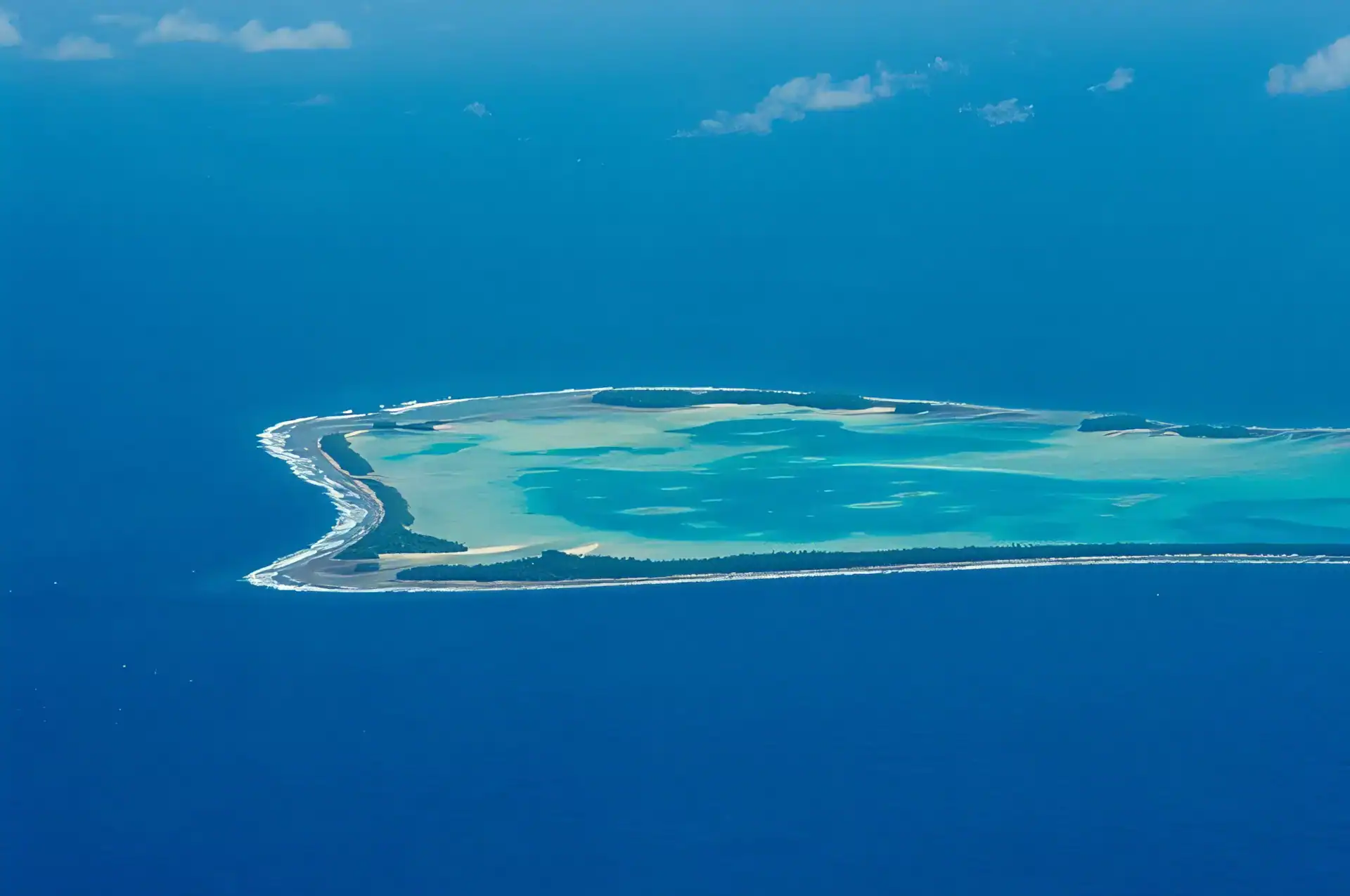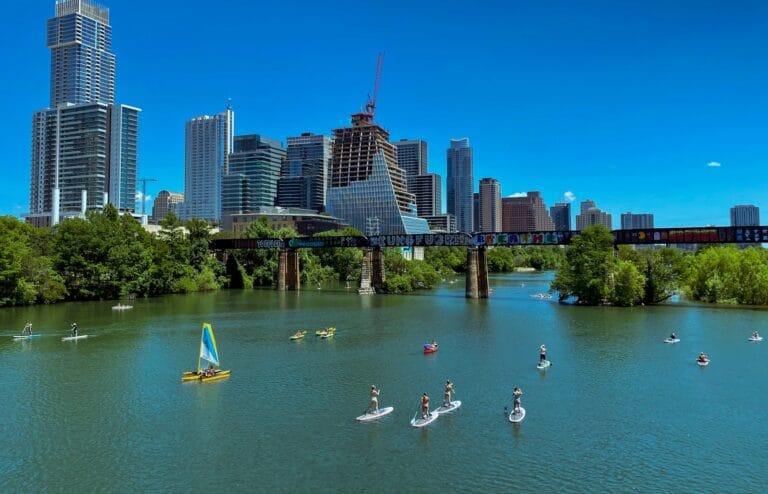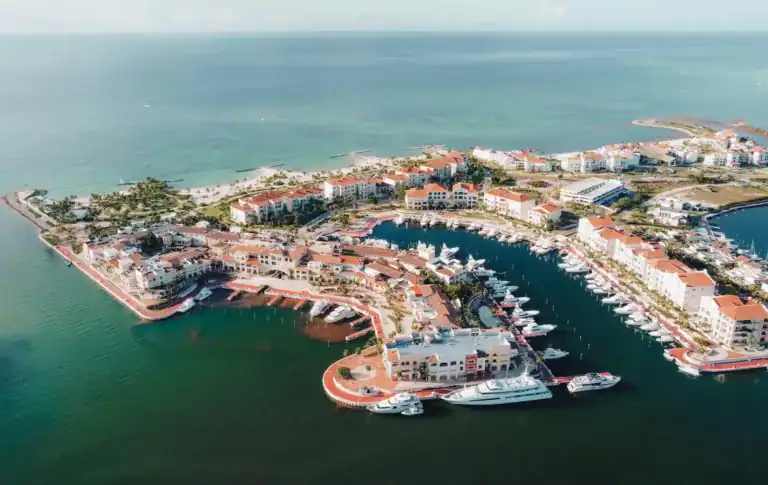Tuvalu Travel Guide: Tiny Nation, Big Ocean Spirit
Intro to Tuvalu Travel Guide
Set in the South Pacific between Fiji and Kiribati, Tuvalu is one of the world’s smallest and least-visited nations — a collection of nine low-lying islands and atolls where daily life is shaped by the sea. With just 11,000 residents, Tuvalu charms travelers with its simplicity: warm community ties, church choirs that echo across villages, and turquoise lagoons dotted with outrigger canoes.
Life here moves at an unhurried pace. Visitors come not for luxury resorts or nightlife, but for cultural connection, authenticity, and the rare chance to experience one of Earth’s most remote sovereign nations. From the lively capital of Funafuti to outer islands where traditions endure, Tuvalu offers a journey back to essentials — ocean, community, and resilience.
Start planning your trip with our complete Tuvalu Travel Guide — and discover how guided tours and cultural immersion can bring this island nation’s traditions and stories to life.
Where to Go in Tuvalu
Funafuti | Nanumanga | Nanumea | Niutao | Nui | Nukufetau | Nukulaelae | Vaitupu
💡Quick Facts:
Destination: Tuvalu
Continent: Oceania (Polynesia, central Pacific)
Country: Tuvalu (sovereign state, Commonwealth member)
Administrative Division: 9 islands (atolls + reef islands)
Area: 26 km² (fourth-smallest country in the world)
Population: ~11,500
Density: ~442/km²
Capital: Funafuti (on Funafuti Atoll)
Regions/Subregions:
Funafuti Atoll: Capital, government center, main airport
Outer Islands: Nanumea, Nanumaga, Niutao, Nui, Vaitupu, Nukufetau, Nukulaelae, Niulakita
Official Languages: Tuvaluan, English
Currency: Australian Dollar (AUD, $), Tuvaluan Dollar (pegged, rare use)
Time Zone: TVT (UTC+12)
Airports: Funafuti International (FUN) – only international airport
Climate: Tropical; hot and humid year-round, wet season Nov–Apr
Known For: Remote atolls, low-lying islands threatened by sea-level rise, traditional Polynesian culture, lagoon fishing, unique postage stamps and coins
🛂Arrival Info:
Visa-free or visa-on-arrival: 30 days for many nationalities (including U.S., EU, UK, Canada, Australia, NZ).
Passport validity: minimum 6 months.
Visitors must present onward/return ticket.
Access mainly via Fiji (Nadi to Funafuti).
Official info: Tuvalu Immigration – Ministry of Foreign Affairs
🏥Health Info:
No mandatory vaccines; recommended: Hepatitis A, Typhoid, routine immunizations.
Dengue outbreaks occur, especially wet season.
Main hospital: Princess Margaret Hospital (Funafuti).
Medical facilities limited; serious cases require evacuation to Fiji.
Travel insurance with evacuation coverage strongly advised.
🚑 Check travel insurance options for travel emergencies, delays, and medical needs abroad — Get coverage here
💉 Stay Informed with Official Updates: WHO – International Travel & Health | CDC – Travel health updates
🚨Travel Advisory:
Tuvalu is safe with very low crime rates.
Petty theft rare but possible in Funafuti.
Cyclone season: November–April.
Infrastructure limited (roads, utilities, health care).
🌍Track Real-Time Official Updates: US Travel Advisory | UK Foreign Travel Advice | Government of Canada
🥳Holidays:
Independence Day (1 October): Celebrates independence from the UK (1978).
Tuvalu Day (late September/early October): Week-long cultural events.
Gospel Day (11 May).
Christmas Day (25 December).
New Year’s Day (1 January).
💰Visitor Info:
Currency: Australian Dollar (AUD).
No ATMs in Tuvalu; bring cash.
Credit cards rarely accepted, even in Funafuti.
Tipping not customary.
Daily budget:
Budget: AUD 60–100
Midrange: AUD 120–200
Luxury: AUD 250+ (limited options)
🛫Airports:
Funafuti International (FUN): Only international airport; flights from Fiji (2–3 per week, Fiji Airways).
Outer islands served by inter-island ferries, no airstrips.
🧳 Delayed or canceled flight? Check if you’re eligible for compensation
🚍Transport:
Funafuti: minibuses, scooters, walking.
No taxis or formal bus system.
Inter-island transport: government ferries (irregular, weather dependent).
Roads are narrow and limited to main atolls.
Driving: left-hand traffic.
🚗 Book reliable airport transfers and in-city rides in advance. Reserve your ride here
🛰️Connectivity:
SIM: Tuvalu Telecommunications Corporation (TTC).
Mobile coverage limited but improving in Funafuti.
Internet: slow and expensive; satellite-based.
Wi-Fi at hotels and government offices.
🛜 Stay connected abroad with affordable eSIM data packs. Get your eSIM here
📜Laws & Etiquette:
Legal drinking age: 18.
Alcohol availability limited; banned in some outer islands.
Modest dress recommended in villages.
Respect maneapa (community meeting houses).
Always ask before photographing people.
👮Emergency Info:
Emergency number: 911.
Princess Margaret Hospital (Funafuti): +688 20407.
Tuvalu Police Service: +688 20011.
NZ High Commission in Suva, Fiji represents Tuvalu consular services.
🏛️ Use embassy locator tools: Embassies Worldwide
🌞Weather:
Average temps: 27–30°C year-round.
Wet season: Nov–Apr (cyclones, heavy rain, king tides).
Dry season: May–Oct (more pleasant travel).
Sea-level rise and flooding increasingly impact travel.
🌦️ Stay prepared—check the weather forecast for your destination — Weather Forecast
Tuvalu by Region – Where to Go
Tuvalu’s nine islands form a loose chain, each with its own identity.
Funafuti Atoll
- Fongafale Islet – The capital, hosting government buildings, schools, and the international airport.
- Funafuti Conservation Area – A protected marine reserve with reefs, lagoons, and seabird sanctuaries.
- Vaiaku Village – Central community with the Tuvalu Philatelic Bureau, church, and small guesthouses.
Outer Islands
- Nanumea – The northernmost island, known for WWII relics and traditional culture.
- Nanumaga – Famous for underwater caves and coastal traditions.
- Niutao – A remote island with strong community life and maneaba councils.
- Nui – A Polynesian-influenced island with unique dances and crafts.
- Vaitupu – The largest island, home to Tuvalu’s secondary school and rich in coconut groves.
- Nukufetau – An atoll with scattered islets and fishing culture.
- Nukulaelae – Small and remote, home to fewer than 400 residents, preserving traditional lifestyles.
Top Places to Visit in Tuvalu
Cultural Capitals
- Fongafale (Funafuti) – The heart of Tuvalu, where modern life meets tradition.
- Vaiaku Village – Hosting the main maneaba (meeting hall) and evening gatherings.
Nature Escapes
- Funafuti Conservation Area – Snorkeling reefs, birdwatching, and lagoon exploration.
- Nanumaga Caves – Submerged caves accessible by boat, steeped in legend.
Historic Sites
- Nanumea WWII Relics – Airstrips and bunkers from the Pacific war.
- Vaitupu Traditional Sites – Ruins of early maneaba and ancestral shrines.
Island Beaches
- Funafuti Lagoon Islets – Day trips to uninhabited motu with turquoise waters.
- Nui’s Shores – Known for its scenic blend of coconut palms and Polynesian-style villages.
Guided Tuvalu tours reveal these highlights — from Funafuti snorkeling trips to maneaba cultural experiences, each showing unique things to do in Tuvalu.
How to Choose Where to Go in Tuvalu
- First-time travelers: Stay in Funafuti for ease of transport, lagoon day trips, and community life.
- Cultural explorers: Venture to Nui or Vaitupu for maneaba traditions, feasts, and dances.
- History enthusiasts: Nanumea offers WWII relics and stories of U.S. forces stationed there.
- Adventurers: Nanumaga’s underwater caves and remote outer islands provide rare travel.
A balanced itinerary includes Funafuti for orientation and one or two outer islands for deeper immersion.
How to Get Around Tuvalu
- International Flights: Fiji Airways connects Funafuti with Suva twice weekly. Routes may expand in future, but remain limited.
- Domestic Travel: Small boats link Funafuti to outer islands. Journeys can take hours or days, depending on distance and weather.
- On Funafuti: Motorbikes and scooters are the main transport. Walking and cycling are easy along the narrow islet roads.
- Outer Islands: Walking and canoes dominate, as cars are rare outside Funafuti.
Travel Budget and Costs in Tuvalu
- Budget: $60–$90/day — local guesthouses, communal meals, walking tours.
- Mid-range: $100–$150/day — private rooms, guided lagoon trips, scooter hire.
- Luxury: $180–$220/day — limited to comfort-oriented guesthouses, private guides, and charter boats.
Sample Costs:
- Meal at guesthouse: $7–$12
- Scooter rental: $10–$15/day
- Boat trip to lagoon islet: $50–$80
- Inter-island boat passage: $30–$70 (varies)
Travel cost in Tuvalu is kept low by limited infrastructure, but higher for inter-island travel due to boat fuel expenses.
Best Time to Visit Tuvalu
- Dry Season (Apr–Oct) – Best for travel, cooler weather, and calm seas.
- Wet Season (Nov–Mar) – Hot, humid, heavy rains, and occasional cyclones.
- Festivals – Independence Day in October and church holidays in December add cultural vibrancy.
The best time to visit Tuvalu is between May and September, when seas are calm and cultural events are frequent.
Festivals and Cultural Events in Tuvalu
- Independence Day (Oct 1, Funafuti) – Parades, traditional dances, and feasts.
- Gospel Day (Aug) – Celebrating Christianity with services and community events.
- Christmas & New Year (Dec–Jan) – Lively celebrations with choirs and maneaba feasts.
- Community Maneaba Feasts (year-round) – Local councils host events with dancing, singing, and coconut feasts.
- Fatele Dances – Performed at special events, with drumming and group singing.
Festivals embody Tuvalu’s spirit of community, tradition, and faith.
Must-See Experiences in Tuvalu
- Snorkel Funafuti Conservation Area – Colorful reefs and fish-rich waters.
- Attend a Fatele Dance – Powerful community performance blending music and movement.
- Explore Nanumaga Caves – Submerged limestone caverns with mythic tales.
- Visit WWII Relics on Nanumea – Airstrips and bunkers left from the Pacific campaign.
- Join a Maneaba Feast – Taste traditional dishes while listening to island songs.
- Relax on Funafuti Lagoon Islets – Picnics, swimming, and cultural tours.
- Cycle Funafuti – See daily life unfold on narrow island roads.
- Birdwatch Nui – Spot seabird colonies and mangrove habitats.
Adventure and Water Activities in Tuvalu
- Snorkeling Funafuti – Accessible reefs teeming with tropical fish.
- Kayaking in Lagoons – Calm paddling across turquoise waters.
- Fishing Trips – Offshore tuna and reef fishing with local guides.
- Diving Nanumaga Caves – Advanced dive exploring underwater chambers.
- Sailing Outrigger Canoes – Traditional voyages led by Tuvaluan navigators.
- Eco-walks in Outer Islands – Coconut groves, mangroves, and shoreline hikes.
National Parks and Outdoor Adventures in Tuvalu
- Funafuti Conservation Area – Established in 1996, protecting reef ecosystems and seabirds across six islets.
- Nanumaga Caves – Natural wonders attracting divers and eco-tourists.
- Outer Island Lagoons – Important for fishing, birdlife, and eco-cultural tours.
Permits aren’t usually needed, but eco-tours promote reef protection and traditional conservation practices.
History and Heritage of Tuvalu
- Ancient settlement: Polynesian seafarers arrived 3,000 years ago, bringing maneaba (communal council) traditions.
- European contact: Known as the “Ellice Islands” during British colonial rule.
- Colonial era: Governed jointly with the Gilbert Islands (Kiribati) until independence.
- World War II: U.S. forces used Nanumea and Funafuti as airbases, leaving airstrips and relics.
- Independence (1978): Tuvalu became the fourth-smallest nation in the world.
Heritage endures through language, communal governance, weaving, and fale-style homes.
Best Travel Itineraries in Tuvalu
3-Day Funafuti Highlights
Day 1: Explore Fongafale + Tuvalu National Library.
Day 2: Snorkel Funafuti Conservation Area + cycle to Vaiaku.
Day 3: Picnic on lagoon islets + sunset at Funafuti airstrip.
5-Day Cultural Explorer
Day 1–2: Funafuti town + maneaba feasts.
Day 3: Boat trip to outer lagoon islets.
Day 4: Nanumea WWII relics + village immersion.
Day 5: Return to Funafuti for church service + Fatele dance.
7-Day Island Life
Days 1–3: Funafuti lagoon, conservation area, and cycling.
Days 4–5: Nanumaga caves + Nui cultural visit.
Days 6–7: Vaitupu for school visits + traditional fishing.
10-Day Grand Journey
- Funafuti cultural tours and lagoon excursions.
- Nanumea WWII heritage.
- Nanumaga cave dives.
- Nui dances and crafts.
- Nukufetau and Vaitupu village stays.
Unique Stays and Accommodation Styles in Tuvalu
- Guesthouses in Funafuti – Simple, family-run stays with meals.
- Eco-lodges in Outer Islands – Basic but immersive, close to lagoons.
- Community homestays – Sleep in traditional houses, join village life.
- Church guest facilities – Sometimes available during events or for budget travelers.
Local Cuisine and Culinary Experiences
- Pulaka (swamp taro) – Grown in pits, baked or boiled.
- Coconut crab – A delicacy, usually reserved for special feasts.
- Fish dishes – Grilled, raw, or preserved with coconut milk.
- Breadfruit – Roasted and served with coconut cream.
- Toddy – Sweet coconut sap, drunk fresh or fermented.
- Island feasts – Meals in maneaba often feature roasted pig, taro, and pandanus.
Tuvalu cuisine is simple, filling, and deeply tied to communal culture.
Travel Safety and Cultural Etiquette in Tuvalu
- General safety: Very safe, with welcoming communities.
- Weather: Cyclones possible Nov–Mar.
- Health: Bring sunscreen, repellent, and medications — clinics are basic.
- Etiquette: Remove shoes before entering maneaba, dress modestly, ask before photos.
- Community respect: Participation in church services and feasts shows appreciation.
Practical Travel Tips for Tuvalu
- Currency: Australian dollar (AUD).
- Connectivity: Internet is slow, with limited coverage outside Funafuti.
- Power: 240V, type I plugs.
- Cards: Rarely accepted — cash essential.
- Transport: Flights are limited — plan long stays.
- Packing: Light clothes, snorkel gear, mosquito nets, reef shoes.
- Visas: Many nationalities receive entry permits on arrival; check before traveling.
Where to Go Next – Pair Tuvalu with These Destinations
- Fiji Travel Guide – Regional hub with strong flight connections.
- Kiribati Travel Guide – Shared cultural heritage and remote exploration.
- Samoa Travel Guide – Rich Polynesian traditions and easy onward flights.
- Tonga Travel Guide – Whales, culture, and southern Polynesian contrasts.
Fiji Travel Guide | Kiribati Travel Guide | Samoa Travel Guide | Tonga Travel Guide
Final Planning Checklist for Tuvalu
- Reserve Fiji Airways flights early.
- Book Funafuti guesthouses and outer island boats ahead.
- Carry Australian dollars in cash — no ATMs outside Funafuti.
- Download offline maps and translation apps.
- Pack reef-safe sunscreen, mosquito repellent, and snorkel gear.
- Respect maneaba customs — modest dress and courtesy.
- Prepare for slow internet and limited services.
- Stay flexible — travel here runs on “island time.”
Travel to Tuvalu is rare and rewarding, offering deep cultural connection and tranquil lagoons. Explore more guides on our site and keep planning your Pacific island adventures.









